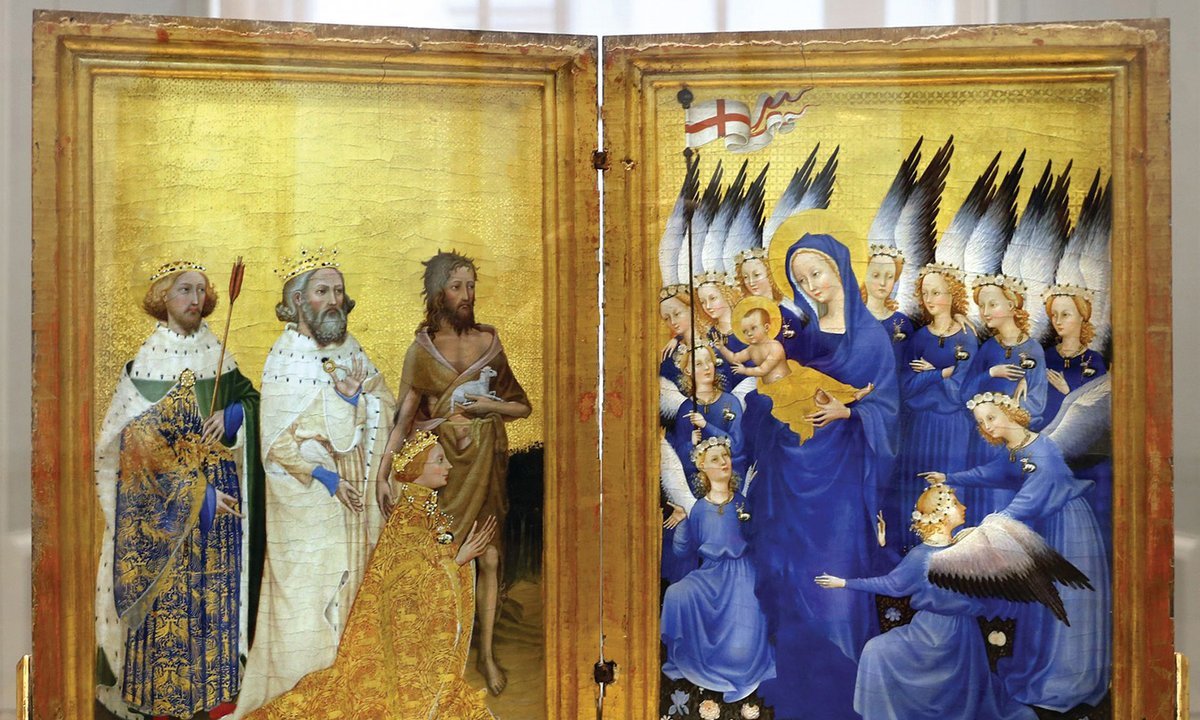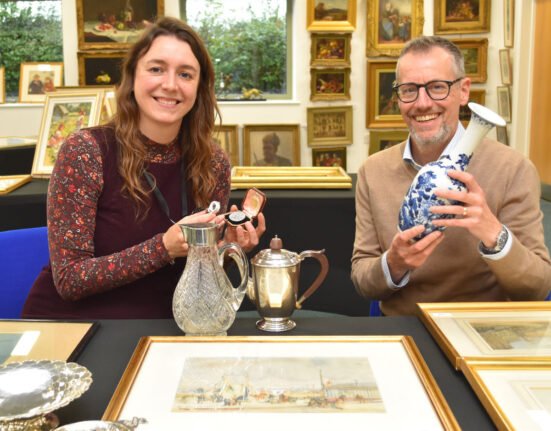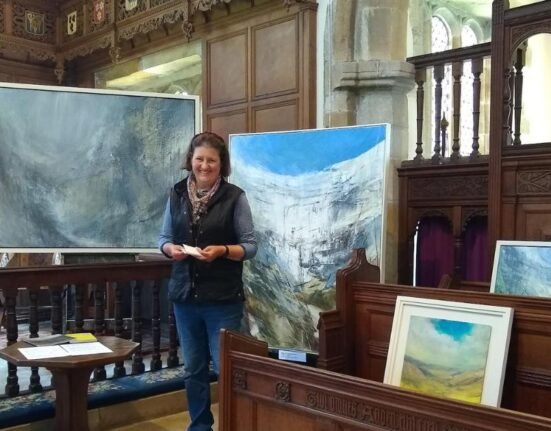As we near the National Gallery’s much-anticipated double reveal of its collection rehang and remodelled Sainsbury Wing, here is a curious tale about its instinct to remain closed, at least in spirit. It concerns one of the UK’s most important paintings, the Wilton Diptych.
The diptych, a jewel of medieval art, shows King Richard II kneeling before the Virgin Mary. Scholars have debated its purpose since it was acquired by the London institution in 1929. One of the diptych’s central mysteries is its date; Richard is shown as a boy, but the consensus has been that the diptych was commissioned in the later 1390s, when he was in his late 20s. Another theory is that it was made after he died in 1399. The picture’s meaning depends in large part on knowing its likely date.
In late 2022 the National Gallery commissioned a tree-ring analysis (dendrochronology) of the wooden panels on which it was painted. Establishing when the tree used was cut down could tell us the earliest year of creation for the painting. This was exciting for me, because I was researching the diptych for a book, and exploring new theories about its possible purpose. So I asked the National Gallery’s curatorial team if they might share the analysis with me. My inquiries went unanswered, so I submitted a request under the Freedom of Information Act. This was in September 2023.
The gallery refused to release the report. The Freedom of Information Act gives public bodies certain exemptions to withhold information, and one of these is if it plans to publish the information itself. The gallery said it would release a new catalogue entry online for the diptych in June 2024, as part of its 200th anniversary celebrations, and this would include the dendrochronological findings.
The exemption is subject to a “public interest test”, and must be “reasonable” given the wider circumstances. I first pointed out that my book would come out months after the gallery’s publication, and that I would be glad to share the results of my own research. I also noted that the gallery was established by parliament to “maintain a collection of works of art … and of documents relating to those works” and to make these documents “available to persons seeking to inspect them in connection with study or research”. But the gallery responded that it wanted to “maximise the impact” of its own publication, and I had to concede this was a valid argument: if the report contained bombshell information, then it was reasonable for the gallery to keep the scoop for itself.
June 2024 came, but without the gallery’s promised publication. Eventually I stumbled across it on the National Gallery website in October. The tree ring analysis was referred to in a single sentence: “Dendrochronology shows that the wood comes from the eastern Baltic and the latest tree ring found was from 1375.” The gallery had made little attempt, as far as I could see, to maximise either the “impact” of the catalogue entry or the dendrochronology. Indeed, when I finally received the report, I saw it had omitted its central conclusion: “these results support the attribution of the Diptych to the later 1390s”. The consensus on the diptych’s date had been right. There was no scoop.
So why all that effort to withhold the report? I later learned that the National Gallery had never refused to release such research before. Regular Diary readers will know I have been a critic of the gallery’s 200th anniversary redevelopment. Was its refusal to share the report a personal response? I hope so. For the alternative, that its institutional instinct is to guard, dragon-like, any new information about the nation’s most treasured paintings, would be far worse.







